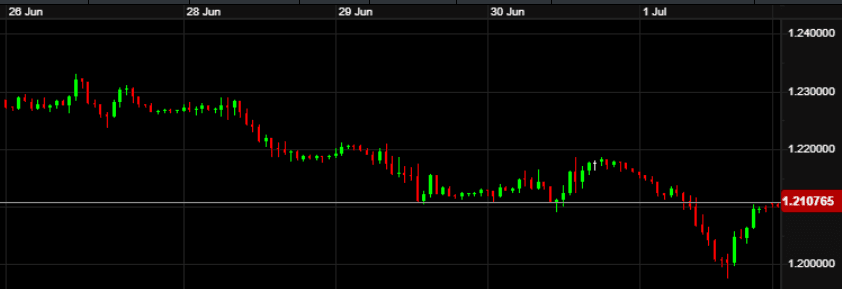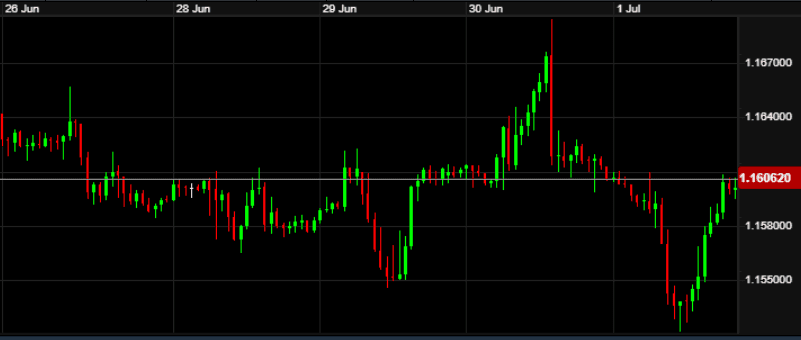ACM Update 04-07-22

All eyes were on Portugal last week as the ECB Forum took place in picturesque Sintra. The event brought together Christine Lagarde, Andrew Bailey & Jerome Powell for their thoughts on the current economic picture globally. We should see a quieter start to this week with Independence Day in the US.
The majority of market data releases last week kept a low profile, as the three biggest names in monetary policy all met face to face. The ECB Forum was the scene for a Bloomberg-hosted panel discussion between the respective heads of the European Central Bank, Bank of England and Federal Reserve.
Of the three major policy makers, Powell seemed to come off the best, with a confident outlook on what to expect from the US economy in the coming months. He maintained the Fed are committed to bringing down inflation, but did nothing to boost current market expectations for interest rate rises. The main takeaway being that the path for interest rates will be dictated by how inflation itself pans out over the months ahead. This much we probably knew already.
Elsewhere on the Dollar front, jobless claims continue the slight upward trend we have seen of late. This week gets off to a quiet start, with Independence Day (4th July) meaning US banks are closed for the day.
On the UK side of things, Andrew Bailey didn’t seem quite as confident as his American counterpart during their Portuguese trip last week. Despite the series of recent interest rate rises, Bailey implied that the Bank will continue on their current trend to combat inflation. He did however confirm that “second round effects of inflation” (such as wage growth & a slowdown in GDP) are a focal point. Should these start to slow, the MPC will have to “act more forcefully”. Market reaction to this however was minimal.
In terms of market data, UK GDP for Q1 of 2022 was confirmed as 0.8% on Thursday morning. Perhaps not as bad as some had feared, however this was before energy & fuel prices had really started to soar. It is likely these will have a bigger impact in the Q2 numbers.
UK bond yields have also slowed heavily of late, suggesting a reduced expectation for further rate rises from the Bank of England. This was a factor in GBP-USD dropping to a two-week low, as shown in the chart below:

Lagarde’s input at the ECB Forum was also seen as relatively hesitant, her quote of the policy stance of being “gradual but optional” in terms of longer-term expectations. She maintained the ECB have said “very clearly what is likely to happen in July” as well as “what’s likely to happen in September”. Markets therefore still expect a rate rise at both of these meetings, which would be the first from Frankfurt in 11 years.
Elsewhere in the Eurozone, unemployment was confirmed as hitting an all time low of 6.6% in the bloc for the month of May. This came as a surprise on Thursday morning, against expectations of 6.8%. On the other side of the coin, inflation continues to rise, now up to 8.6% thus making a rate rise next month even more of a certainty. The data was a factor in a two-week low for GBP-EUR also, as illustrated in the chart below:

The week ahead:
Monday – US Bank Holiday (Independence Day)
Tuesday – Australian Interest Rate Announcement (05:30 UK time), UK & Eurozone Services PMI data (07:45 – 09:00), Andrew Bailey speech (11:00)
Wednesday – Eurozone Retail Sales (10:00), Federal Reserve Meeting Minutes (19:00)
Thursday – ECB Monetary Policy Meeting Minutes (12:30)
Friday – Christine Lagarde speech (12:55), US Non-Farm Payrolls (13:30)
So a quieter Monday is likely as we head into the new week, with US banks closed for the Independence Day bank holiday of 4th July.
After a flurry of interest rate rises a couple of weeks ago, we will see what the RBA in Australia have planned for their own monetary policy come the early hours of Tuesday morning. Philip Lowe and his colleagues are likely to be playing catchup with a 50-basis point rate hike, again to combat inflation. This follows Lowe being laughed at last week at a conference in Zurich, having admitted the RBA themselves only receive inflation data quarterly. No wonder recent inflationary pressures have caught them by surprise.
The raft of Services sector figures from the Eurozone and the UK come out on Tuesday morning. These will be monitored closely as leading indicators for a slowdown in growth in the sector.
Wednesday sees another growth indicator in the form of retail sales from the Eurozone. A growth of 0.4% is forecast, however the figure has fallen short of expectations for the last five months. The latest Federal Reserve meeting minutes land in the evening, although Powell has been fairly clear in recent conferences, so these shouldn’t spring a surprise.
The ECB follow suit with their own monetary policy minutes on Thursday lunchtime. These are likely to be looked at for further guidance beyond the July and September meetings, which Lagarde has thus far been fairly reserved about delving into in any detail on.
Friday sees the big US monthly jobs release in terms of Non-Farm Payrolls. Markets are expecting a slight slowdown, with a forecast of 275,000 jobs added to the US economy, which if correct would be the lowest figure since January’s 199,000. Unemployment data is released simultaneously and expected to come in at a healthy 3.6%. Anything lower than this would be a return to the pre-pandemic lows of January 2020.
The current picture of uncertainty in various financial markets sees it tough to bet against the safe haven that is the US Dollar at the moment. This is likely to keep EUR-USD and GBP-USD under pressure. For clients looking to sell Dollars, there are likely to be some favourable opportunities, so please ensure the team are aware of upcoming requirements so we can reach out accordingly.
For Sterling-Euro buyers, as demonstrated last week we are on a bit of a rollercoaster at the moment to put it mildly. Thus, there will be opportunities on both sides of the coin dependent on market events.
Keep in touch and have a great week.